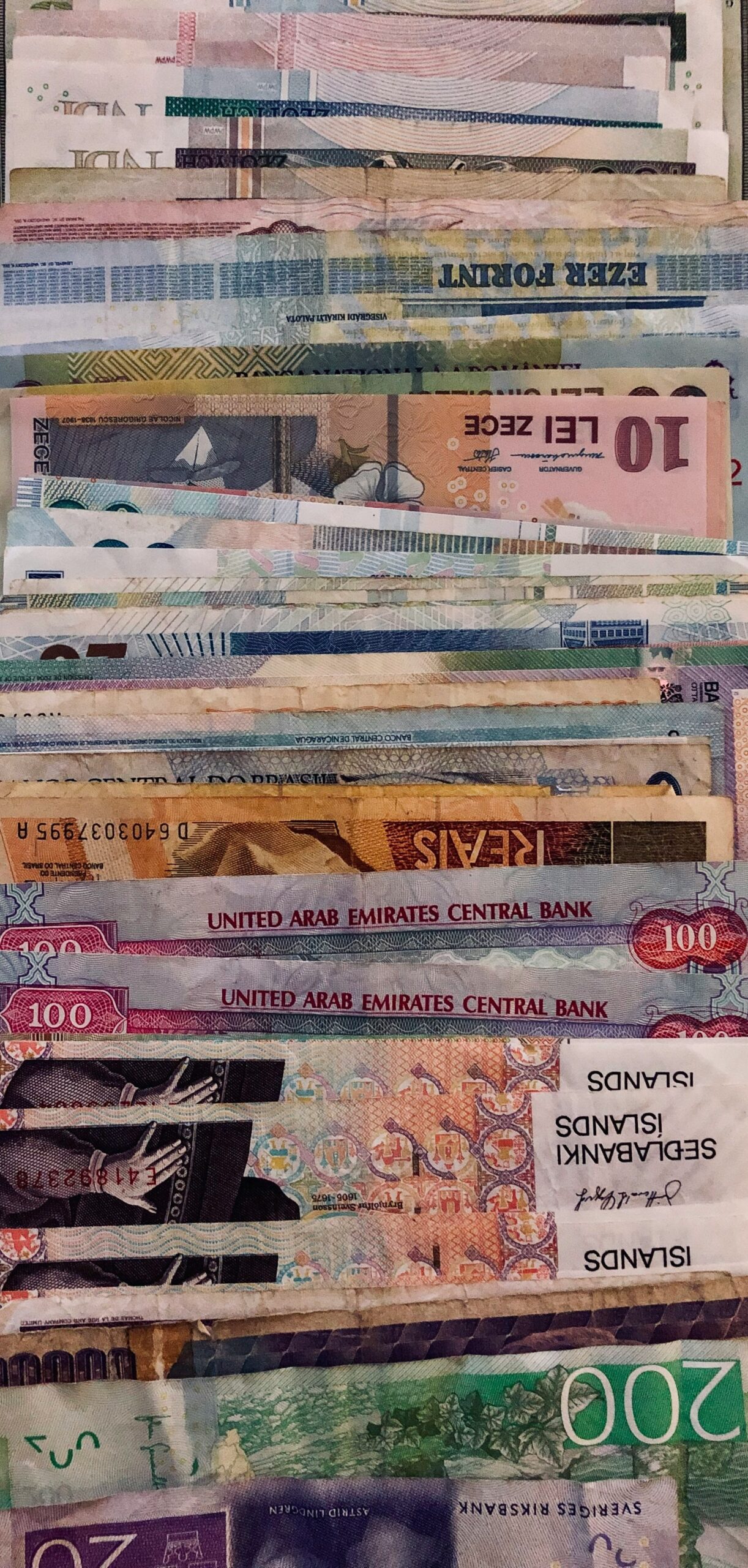Your cart is currently empty!

Budgeting on a Tight Income: Practical Tips and Strategies

Understanding Your Financial Situation
Assessing your financial situation is the foundational step in budgeting on a tight income. It begins with a comprehensive evaluation of all income sources. This involves listing every stream of income, whether it is from a primary job, side hustles, freelance work, or government assistance. Accurate documentation is crucial as it provides a clear understanding of the total funds available each month.
Equally important is tracking your expenses over a one-month period. This should include all fixed costs, such as rent or mortgage payments, utilities, and insurance premiums, as well as variable expenses like groceries, transportation, and entertainment. Utilizing tools such as budgeting apps or simple spreadsheets can facilitate this process by categorizing each expense and summing them up. The goal is to account for every dollar spent, which helps in identifying spending patterns and potential areas for reduction.
The importance of honesty and accuracy cannot be overstated during this assessment. It’s easy to underestimate small, daily expenditures that cumulatively impact your budget significantly. By being meticulous, you gain a realistic picture of your financial health. This clarity is essential for making informed decisions about where to cut back and how to allocate resources more effectively.
Once you have a detailed record of your income and expenses, you can begin to analyze the data. Look for categories where you may be overspending and consider setting limits or finding cheaper alternatives. This might involve reducing dining out, minimizing subscription services, or opting for public transportation over owning a car. Every small adjustment contributes to a more balanced budget, allowing you to manage your finances more sustainably.
Setting Realistic Financial Goals
When budgeting on a tight income, setting realistic and achievable financial goals is a critical step toward financial stability. Understanding your financial situation provides a solid foundation for this process, enabling you to set goals that are both practical and motivating. Financial goals can range from short-term objectives, like building an emergency fund, to long-term ambitions, such as paying off substantial debt. To ensure these goals are effective, it is essential to apply the SMART criteria: Specific, Measurable, Achievable, Relevant, and Time-bound.
A specific goal clearly defines what you intend to achieve. For example, instead of vaguely aiming to “save money,” a specific goal would be “save $500 for an emergency fund.” This clarity helps you understand precisely what you need to do. Measurable goals allow you to track your progress and stay motivated. By setting a measurable goal, such as saving a certain amount each month, you can observe your advancement and make necessary adjustments along the way.
Achievability is another crucial aspect of goal setting. While it is important to aim high, your goals should be realistic given your current financial situation. Setting an achievable goal means you are more likely to stick to it and not become discouraged. Relevance ensures that your financial goals align with your broader life objectives and financial plans. A relevant goal takes into account your personal circumstances and priorities, making it more meaningful and motivating.
Finally, a time-bound goal has a clear deadline, which provides a sense of urgency and helps prevent procrastination. For example, setting a timeline of six months to save your emergency fund gives you a clear target to work toward. Meeting these SMART criteria can significantly enhance your ability to budget effectively on a tight income, ensuring that your financial goals are clear, attainable, and aligned with your overall financial health.
Creating a Basic Budget
Budgeting is a critical financial tool, particularly for those managing a tight income. A budget serves as a roadmap, guiding you in the allocation of your limited resources to cover essential expenses and, ideally, save for future needs. Creating a basic budget starts with understanding your income and expenses.
First, list all sources of income. This includes wages, freelance earnings, government benefits, and any other regular income streams. Once you have a comprehensive view of your total monthly income, the next step is to categorize your expenses. Separate your expenditures into fixed expenses (such as rent, utilities, and loan payments) and variable expenses (like groceries, transportation, and entertainment). Identifying these categories helps in pinpointing areas where you can potentially cut back.
Prioritizing needs over wants is crucial when your income is tight. Needs are essential for survival and well-being, such as housing, food, healthcare, and basic utilities. Wants, on the other hand, are non-essential items that can be reduced or eliminated temporarily, such as dining out, subscriptions, and leisure activities. Allocating funds to needs first ensures that you meet your essential obligations.
Even on a tight income, setting aside a small amount for savings is important. Start with a modest goal, such as saving $5 or $10 per week. Over time, these small amounts can accumulate, creating a financial cushion for emergencies or future investments. Consider using automatic transfers to a savings account to make this process effortless.
Regularly reviewing and adjusting your budget is also vital. Your financial situation and expenses may change, so revisit your budget monthly to ensure it remains aligned with your current circumstances. By diligently managing your budget, prioritizing essential expenses, and committing to regular savings, you can achieve greater financial stability, even with a limited income.
Cutting Non-Essential Expenses
When managing a tight income, one of the most effective strategies is to identify and reduce non-essential expenses. This involves a critical examination of your spending habits to distinguish between needs and wants. Needs are essential for basic living, such as housing, utilities, and food, while wants are discretionary, such as dining out, entertainment, and luxury items.
One practical tip is to cook at home instead of eating out. Preparing meals at home can save a significant amount of money compared to dining in restaurants or ordering takeout. Planning your meals and shopping with a list can also help avoid impulse purchases and minimize food waste.
Another way to cut non-essential expenses is by canceling unused subscriptions. It is common to subscribe to various services like streaming platforms, magazines, or gym memberships that we rarely use. Regularly reviewing these subscriptions and canceling those that are not utilized can free up funds for more critical needs.
Finding cheaper alternatives for everyday items is also a valuable strategy. For instance, purchasing generic brands instead of name brands often results in substantial savings without compromising quality. Additionally, consider buying second-hand items, such as clothing and furniture, which can be cost-effective and environmentally friendly.
Moreover, it’s essential to develop a mindset of frugality. Before making any purchase, ask yourself if it is a necessity or a want. This practice helps in prioritizing spending on essential items and avoiding unnecessary expenditures. Utilizing budgeting apps can also provide insights into spending patterns and highlight areas where you can cut back.
Incorporating these practical tips can significantly reduce non-essential expenses, allowing for better financial management on a tight income. By distinguishing between needs and wants and making conscious spending decisions, you can create a more sustainable and balanced budget.
Maximizing Your Income
Maximizing your income, especially on a tight budget, can significantly improve your financial stability. One effective strategy is taking on a part-time job. Many industries offer flexible, part-time positions that can fit around your existing schedule. Retail, hospitality, and customer service roles are commonly available and can provide a steady additional income stream.
Freelancing is another viable option. With the rise of the gig economy, platforms like Upwork, Fiverr, and Freelancer allow you to offer your skills and services on a project-by-project basis. Whether you are a writer, graphic designer, or programmer, freelancing can help you capitalize on your existing talents. Additionally, remote work opportunities have expanded, providing greater flexibility to earn extra income from home.
For those with unused items cluttering their homes, selling these items can be a quick way to generate extra cash. Online marketplaces such as eBay, Craigslist, and Facebook Marketplace make it easy to reach potential buyers. Clothing, electronics, and household goods are often in demand and can be sold with minimal effort.
Participating in gig economy jobs is another practical approach. Services like Uber, Lyft, and DoorDash allow you to earn money on your own schedule. These platforms offer the flexibility to work as much or as little as you want, making them ideal for supplementing your income without committing to a fixed schedule.
Additionally, consider leveraging resources such as local job boards, community centers, and social media groups that can connect you with part-time or freelance opportunities. Websites like Indeed, Glassdoor, and LinkedIn are also useful for finding part-time roles or contract work that suits your skill set and availability.
By exploring these avenues, you can find ways to increase your income, even if it’s just a small amount, thereby easing financial pressure and allowing for more effective budgeting.
Utilizing Free and Low-Cost Resources
One of the key strategies for effective budgeting on a tight income is leveraging free and low-cost resources. These tools and services can significantly aid in managing finances without adding extra burden. Several budgeting apps, for instance, are available at no cost or for a nominal fee. Apps like Mint, YNAB (You Need A Budget), and EveryDollar offer features that help track expenses, categorize spending, and set savings goals. These applications can be accessed via smartphones or computers, making them convenient and user-friendly.
Community resources also play a crucial role in financial management. Many local food banks provide essential groceries to those in need, reducing the monthly expenditure on food. To access these services, individuals can reach out to local community centers or search online for nearby food banks. Additionally, some community organizations offer free or low-cost meals and pantry items, which can further alleviate financial pressure.
Financial counseling services are another valuable resource. Non-profit organizations, such as the National Foundation for Credit Counseling (NFCC) and local community service agencies, offer free or affordable financial counseling. These services provide personalized advice on budgeting, debt management, and financial planning. Sessions can be accessed via phone, online, or in-person, depending on availability and location.
Educational resources are also essential for financial literacy. Many libraries offer free access to books, workshops, and seminars on personal finance topics. Online platforms like Coursera, Khan Academy, and even YouTube provide free courses and tutorials on budgeting, saving, and investing. Utilizing these resources can enhance financial knowledge and empower individuals to make informed decisions.
Incorporating these free and low-cost resources into daily life can significantly ease the process of budgeting on a tight income. By taking advantage of these tools and services, individuals can better manage their finances, reduce expenses, and work towards financial stability.
Building an emergency fund is a crucial financial strategy, even when operating on a tight income. An emergency fund serves as a financial safety net, providing you with the means to cover unexpected expenses without derailing your budget. While it may seem challenging to save when resources are limited, there are practical methods to gradually build this essential reserve.
One effective strategy is to save small amounts consistently. Even setting aside a few dollars each week can accumulate into a significant sum over time. This incremental approach makes the task less daunting and more manageable. Consider automating your savings by setting up a direct deposit from your paycheck into a separate savings account. This way, you won’t be tempted to spend the money, and your emergency fund will grow steadily.
Another useful tactic is to capitalize on windfalls, such as tax refunds, bonuses, or any unexpected income. Instead of using these funds for discretionary spending, allocate them directly to your emergency fund. Such windfalls can significantly accelerate your savings progress, providing a substantial boost to your financial cushion.
Additionally, review your budget to identify areas where you can cut back, even if it’s just temporarily. Redirecting these savings into your emergency fund can make a big difference. For instance, reducing dining out, canceling unused subscriptions, or finding more affordable alternatives for recurring expenses can free up additional funds for your savings goal.
Lastly, consider the psychological benefits of visualizing your progress. Use charts or savings apps to track your growing emergency fund. Seeing your savings increase can be highly motivating and reinforce the habit of saving regularly.
In essence, while building an emergency fund on a tight income requires discipline and strategic planning, the peace of mind it provides makes the effort worthwhile. By saving small amounts regularly and leveraging windfalls, you can create a financial buffer that protects you against unforeseen financial challenges.
Staying Motivated and Adjusting Your Budget
Maintaining motivation is crucial when managing a budget on a tight income. Consistently tracking your progress can serve as a powerful motivator. Utilize budget tracking tools or personal finance apps to monitor your spending and savings. These tools provide a clear visual representation of your financial journey, making it easier to identify areas where you are excelling and where you may need improvement.
Celebrating small wins can also help sustain motivation. Recognize and reward yourself for hitting milestones, no matter how minor they may seem. Whether it’s paying off a small debt or successfully saving for a month, acknowledging these achievements reinforces positive behavior and encourages continued effort.
Flexibility is another key aspect of staying motivated. Life is unpredictable, and circumstances can change rapidly. Whether it’s an unexpected expense or a change in income, being willing to adjust your budget as needed is essential. Revisit and revise your budget regularly to ensure it aligns with your current financial situation. This adaptability will help you stay on track without feeling overwhelmed or discouraged.
Remember that budgeting is a continuous process. It’s not about perfection but about making progress. If you encounter setbacks, view them as learning opportunities rather than failures. Adjust your strategies and keep moving forward. By maintaining a flexible approach and celebrating your progress, you can stay motivated and effectively manage your budget, even on a tight income.
Recent Posts
- Mastering Budgeting with Irregular Income: A Comprehensive Guide

- How to Deal with Budget Busters: A Comprehensive Guide

- Mastering the Art of Managing Impulse Purchases: A Comprehensive Guide

- Mastering Your Finances with the 50/30/20 Budgeting Rule

- Budgeting for Clothing: A Comprehensive Guide to Smart Shopping

Categories
Archive
Tags
budget-friendly transportation budgeting Budgeting Tips Clothing Budgeting cost-saving tips Digital Finance Dining Out eco-friendly commuting economics Economic Trends Emergency Fund entertainment expenses ESG Investing financial crisis Financial Independence Financial Management Financial Planning Fintech flexible jobs freelance work Future of Work gig economy Grocery Budgeting higher education Impact Investing Impulse Buying inflation Interest Rates Investing Basics Investment Strategies Irregular Income Market Volatility Meal Planning money management Personal Finance Remote Work Retirement Planning Risk Management Shopping Habits Smart Shopping student loans Sustainable Finance Sustainable Lifestyle Technology workplace productivity

